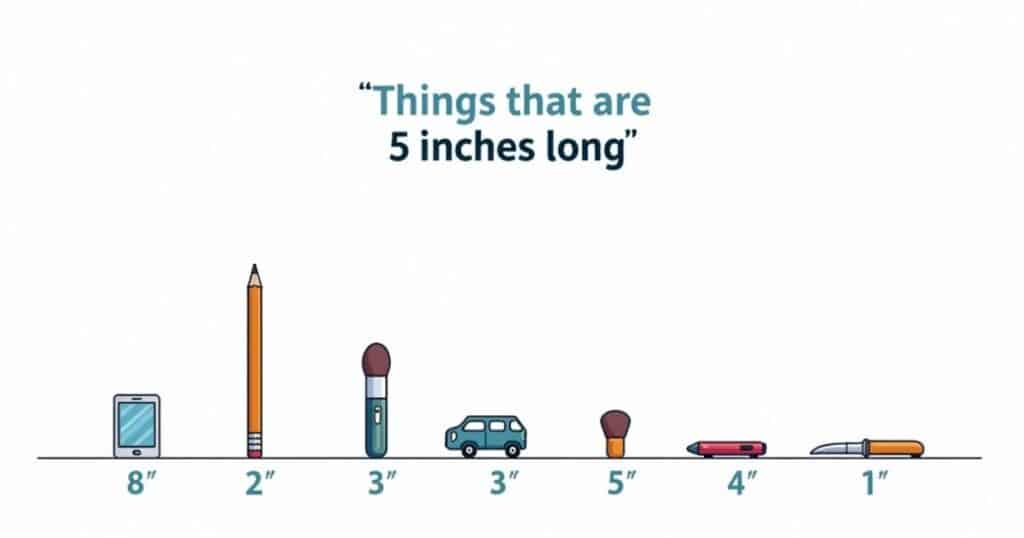Ever wondered why those big yellow vehicles come in different shapes and sizes? School buses are iconic symbols of education in America, but they’re far from one-size-fits-all.
From the compact Type A models serving special needs students to the massive Type D “flat-nose” buses transporting entire sports teams, these vehicles are carefully designed to meet specific transportation needs.
How Long is a School Bus?
School buses range dramatically in length from 20 feet for the smallest Type A buses to a whopping 45 feet for the largest Type D models. The most common Type C school bus (the classic design most people picture) typically measures between 35-40 feet long.
This variation isn’t random it reflects the diverse transportation needs of school districts across the country, from rural areas with winding roads to urban districts with thousands of students.
The Evolution of the Yellow Giants
The familiar yellow school bus we recognize today has come a long way since its humble beginnings. In the early 1900s, students were transported to school in wagons, trucks, or whatever vehicles were available. By the 1930s, the first purpose-built school buses appeared, though they lacked standardization.
1939 marked a turning point when education officials from across the country gathered for the first National Conference on School Transportation.
This meeting established national standards for school buses, including the now-iconic “National School Bus Glossy Yellow” color (originally called “National School Bus Chrome”). This distinctive shade was chosen for its visibility in poor weather and dawn/dusk conditions critical for keeping children safe.
As school districts expanded and student populations grew, so did the need for larger, more efficient buses. Today’s fleet represents decades of evolution in design, safety features, and specialized configurations to meet diverse needs.
Types of School Buses and Their Dimensions
Type A: The Compact Specialists
Length: 20-25 feet Capacity: 10-24 passengers Weight: 10,000-14,500 pounds
These smallest members of the school bus family are built on van chassis and often serve specialized routes. You’ll frequently see Type A buses transporting students with special needs or serving routes with low ridership in areas where larger buses can’t easily navigate.
What makes these buses particularly valuable is their maneuverability. They can navigate tight residential streets and rural roads with ease. Despite their compact size, Type A buses maintain the same rigorous safety standards as their larger counterparts.
A growing trend has been the adoption of Type A buses for preschool programs, where the smaller size feels less intimidating to young children just starting their educational journey.
Type B: The Mid-Size Solution
Length: 23-30 feet Capacity: 24-30 passengers Weight: 10,000-16,000 pounds
Type B buses are relatively uncommon in most school districts but fill an important niche. They’re built with a portion of the engine inside the passenger compartment, usually beside the driver. This configuration creates more passenger space while maintaining a relatively compact footprint.
These buses typically serve routes with moderate ridership where a full-size bus would be inefficient but a Type A bus insufficient. The unique engine placement creates a distinct profile, with a shorter nose than Type C buses.
School districts in areas with varying terrain often appreciate Type B buses for their combination of passenger capacity and maneuverability, especially in hilly regions where the engine position provides better weight distribution and handling.
Type C: The Classic “Conventional” Bus
Length: 35-40 feet Capacity: 54-78 passengers Weight: 16,000-29,500 pounds
When someone says “school bus,” the Type C is what most people envision. With its distinctive hood extending in front of the driver, this conventional design represents approximately 80% of all school buses on American roads.
The engine placement in front of the windshield creates the classic profile while providing excellent maintenance access. These workhorses serve most general education routes across the country, offering an optimal balance of capacity, maneuverability, and cost-effectiveness.
Type C buses have undergone significant evolution in recent decades, with improved driver visibility, enhanced safety features, and better fuel efficiency. Modern versions often include options for alternative fuels such as propane or compressed natural gas (CNG), helping districts reduce their environmental footprint.
Type D: The Transit-Style Giants
Length: 40-45 feet Capacity: 80-90 passengers Weight: 25,000-36,000 pounds
The largest school buses on the road are the Type D “transit-style” buses, recognizable by their flat front end with no hood. These behemoths come in two configurations: forward control (FC) with the entry door ahead of the front wheels, and rear engine (RE) with the engine mounted in the rear.
Type D buses excel at high-capacity routes, especially in suburban and urban districts with dense student populations. Their flat front design maximizes interior space while providing excellent driver visibility. Many districts use these buses for longer routes, athletic team transportation, or activity buses for field trips.
The size of Type D buses requires specialized driver training, as they handle differently than conventional buses. Their length also means districts must carefully plan routes to avoid narrow streets and tight turns.

Specialized Bus Configurations
Short Buses
The term “short bus” typically refers to Type A or smaller Type C buses, often ranging from 20-30 feet in length. These vehicles serve vital roles in transportation programs, despite sometimes carrying unfortunate social stigma.
Short buses excel at:
- Special education transportation with wheelchair accessibility
- Routes with low ridership
- Areas with narrow roads or tight turns
- Small private schools with limited enrollment
- Field trips for smaller groups
Many modern short buses feature advanced accessibility options, including wheelchair lifts, flexible seating configurations, and enhanced climate control systems for students with medical needs.
See Also: Things that Are 40 Feet Long/Tall – Sizes of Common Objects and Stuff
Articulated Buses
Though rare in school transportation, some districts in densely populated urban areas utilize articulated buses vehicles with a pivot point in the middle allowing them to “bend” around corners.
These buses can stretch up to 60 feet long and transport over 100 students, making them ideal for high-density routes.
The articulation point creates a distinctive “accordion” appearance when the bus turns. While these buses offer tremendous capacity, they require specialized driver training and careful route planning to accommodate their unique handling characteristics.
The Science Behind School Bus Dimensions
School bus dimensions aren’t arbitrary they’re carefully calculated based on transportation science, safety requirements, and practical operational constraints.
Safety Considerations
The height, width, and length of school buses contribute directly to their remarkable safety record. The elevated seating position (known as “compartmentalization”) protects students in collisions, while the substantial body structure provides unparalleled crash protection.
The standard width of 8 feet allows for adequate aisle space while maintaining stability on the road. Height typically ranges from 9.5-11 feet, calculated to provide sufficient headroom while avoiding low-clearance obstacles.
Regulatory Framework
Federal Motor Vehicle Safety Standards (FMVSS) govern many aspects of school bus design, including:
- FMVSS 220: School bus rollover protection
- FMVSS 221: School bus body joint strength
- FMVSS 222: School bus passenger seating and crash protection
- FMVSS 217: Bus emergency exits and window retention
These standards ensure that regardless of size, all school buses provide consistent safety performance.
State regulations may further dictate maximum dimensions based on local infrastructure constraints. For example, states with many rural routes might allow different configurations than heavily urbanized areas with narrow streets.
Real-World Applications: Choosing the Right Bus Size
School districts face complex decisions when selecting bus sizes for their fleets. Several factors influence these choices:
Geographic Considerations
Rural districts with sprawling attendance zones often prefer larger buses to maximize efficiency, while those with winding country roads might opt for more maneuverable options. Urban districts must consider street width, turning radius constraints, and traffic congestion.
The topology matters too mountainous regions might benefit from the power and handling of certain configurations, while flat terrain presents different optimization opportunities.
Demographic Factors
Student population density directly impacts bus selection. High-density neighborhoods might warrant larger buses, while areas with scattered populations might be better served by multiple smaller vehicles.
Special education requirements also influence fleet composition. Districts must consider the percentage of students requiring specialized transportation and accessible features.
Read more posts like this: Things that Are 100 Feet Long/Tall – Common Objects and Their Sizes
Economic Equations
The financial implications of bus selection extend beyond the initial purchase price. Larger buses cost more upfront but offer lower per-student transportation costs when fully utilized. However, they also consume more fuel and may require more maintenance.
Many districts optimize their fleets with a combination of bus sizes, deploying each type where it provides maximum efficiency. This mixed-fleet approach allows for both operational flexibility and cost control.
Measuring Tips: Visualizing School Bus Lengths
Need to visualize just how long different school buses are? Here are some practical comparisons:
- A Type A bus (20-25 feet) is approximately the length of a box truck or a standard living room.
- A Type C bus (35-40 feet) is about the same length as four mid-sized sedans parked bumper-to-bumper.
- A Type D bus (45 feet) stretches roughly the length of a semi-trailer without the cab.
If you’re trying to estimate whether a bus will fit in a particular space, use these measurements:
- Pace off the area, with each normal step representing approximately 2.5 feet
- Use a standard parking space (18-20 feet) as a reference unit
- Visualize the space in terms of car lengths (about 15 feet each)
Recent Innovations in School Bus Design
The dimensions of school buses continue to evolve as manufacturers incorporate new technologies and respond to changing needs:
Alternative Fuel Configurations
Electric school buses, increasingly adopted nationwide, sometimes feature slightly different dimensions to accommodate battery systems. Some designs place battery packs underneath the floor or in previously unused spaces, maintaining passenger capacity while transitioning to cleaner energy.
Propane and CNG buses may require modified dimensions to accommodate fuel storage systems safely. These alternative fuel buses often feature slightly increased height or modified frame designs.
Smart Technologies
Modern school buses increasingly incorporate technology requiring space considerations:
- GPS tracking systems
- Student scanning systems
- Wi-Fi capabilities for student devices
- Advanced driver assistance systems
- Climate control enhancements
These additions sometimes necessitate slight modifications to interior configurations while maintaining external dimensions.
Conclusion
School bus sizes reflect a fascinating intersection of safety science, regulatory requirements, operational needs, and practical constraints. From the nimble 20-foot Type A to the massive 45-foot Type D, each configuration serves a specific purpose in our education transportation system.
Understanding these dimensions helps communities appreciate the thoughtful engineering behind these vehicles. Beyond their iconic color, school buses represent precisely calculated designs optimized for their precious cargo.
Next time you see a school bus on the road, you might notice whether it’s a Type A, C, or D. You’ll recognize the intentional design choices that make these vehicles uniquely suited to their vital role in education.
Look around your community how many different school bus types can you spot? Each one tells a story about your local education system’s transportation needs and priorities.
Read more knowledgeable blogs on Measure Take.



